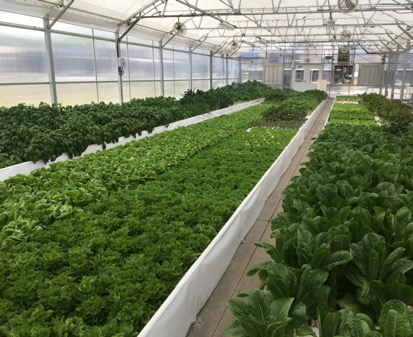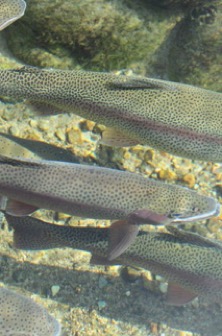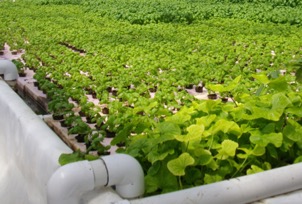Aquaponics
by Craig Robinson, a student at the University of Pittsburgh
- Aquaponics is a method of soil-less farming that utilizes fish waste to fertilize plants.
- The fish waste is absorbed by the plants and returned to the fish tank as clean water: this process is known as bioremediation.
- Aquaponics uses 90% less water than a traditional farm: a way of growing food that promotes water sustainability [North].
- No fertilizers, pesticides, or other chemical additives are used, leading to organic crops; the use of these chemical products would create toxic conditions for the fish [North].
- Aquaponics can be grown anywhere – whether it is in suburban, rural, or urban areas.
- Indoor aquaponics can be grown year round, since it is independent of weather and climate conditions.
Plants grown in an aquaponics system grow twice as fast due to the natural fortification of the water and nutrients obtained from fish waste [Volcano Veggies, North]. - Aquaponics uses less land than a traditional farm, conserving space.
- Superior Fresh, an aquaponics company based in Wisconsin, grows salmon and lettuce year round despite the cold Midwest winter. The company is able to produce 200,000 lbs. of salmon and 3 million lbs. of salad greens annually. A traditional farm would need 100 acres of land to achieve this level of production; however, Superior Fresh only used 6 acres [Simke].
To read more, click these links:



Photo credits:
- Aquaponics Association, 2 Apr. 2020, https://www.aquaponicsassociation.org/commercial-growers-hit-hard-by-coronavirus/.
- Rainbow Trout. Eau Claire, Wisconsin, 1 Sept. 2017, https://www.weau.com/content/news/Walker-celebrates-opening-of-aquaponics-facitliy–442471103.html.
- Borgen Project, 19 Aug. 2019, https://www.borgenproject.org/aquaponics-in-developing-countries/.
